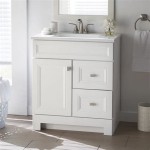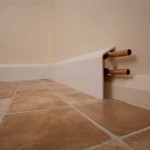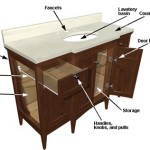Essential Aspects of Standard Residential Bathroom Sink Dimensions
Standard residential bathroom sink dimensions are a critical consideration in bathroom design and renovation projects. These measurements impact the overall aesthetics, functionality, and comfort of the space. Understanding the essential aspects of sink dimensions is crucial to create a bathroom that meets both practical and aesthetic needs. ### Bowl Shape and Size The bowl shape of the sink determines the amount of usable space and the ease of use. Common shapes include oval, rectangular, and circular bowls. The size of the bowl should be proportionate to the size of the bathroom and vanity. A larger bowl provides more space for washing and rinsing, while a smaller bowl conserves space and creates a more compact look. ### Depth and Slope The depth of the sink influences the amount of water that can be held and the splashing potential. A deeper sink prevents water from splashing outside the bowl, while a shallower sink is easier to reach for children and individuals with limited mobility. The slope of the sink also affects water drainage. A steeper slope ensures faster drainage, preventing water from pooling in the bowl. ### Height and Clearances The height of the sink from the floor determines comfort and accessibility. Standard sink heights range from 30 to 36 inches. The height should allow for comfortable use without requiring excessive bending or reaching. Clearances around the sink, such as the distance from the wall and the vanity, should also be considered to ensure proper installation and accessibility. ### Material and Finish The material of the sink impacts durability, aesthetics, and maintenance. Common materials include porcelain, ceramic, stainless steel, and natural stone. Porcelain and ceramic sinks are durable and easy to clean. Stainless steel sinks are resistant to rust and corrosion. Natural stone sinks add a touch of luxury and elegance. The finish of the sink, such as matte or glossy, can complement the bathroom's overall design scheme. ### Installation Type Sinks can be installed in various ways, including drop-in, undermount, and vessel. Drop-in sinks rest on top of the vanity, providing a simple and affordable installation option. Undermount sinks are installed beneath the countertop, creating a seamless and modern look. Vessel sinks are set on top of the vanity, giving a unique and focal point to the bathroom. ### Conclusion Standard residential bathroom sink dimensions are essential aspects to consider when designing and installing a bathroom. Understanding the nuances of bowl shape, size, depth, slope, height, clearances, material, finish, and installation type ensures that the sink not only complements the bathroom's aesthetics but also provides functionality and comfort for its users.
Bathroom And Restroom Measurements Standards Guide

What S The Standard Depth Of A Bathroom Vanity

Bathroom Measurement Guide These Are The Measurements You Need To Know

What Is Standard Height Of Bathroom Vanity Cabinets Home Depot

What Is The Standard Bathroom Vanity Height Size Guide

What Is The Standard Height Of A Bathroom Vanity

Home Decorators Collection Rockleigh 36 In W X 22 D 34 H Single Sink Bath Vanity White With Carrara Marble Top 36w The Depot

Residential Bathroom Code Requirements Design Tips

Standard Sizes And Dimensions Of Home Furniture Bathroom Layout Plans

Bathrooms And Layouts Residential Bathroom Design
Related Posts







